


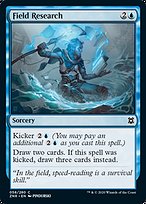








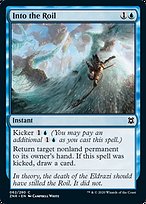




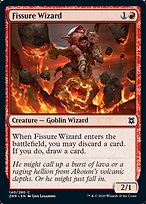


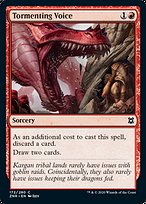



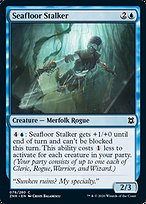
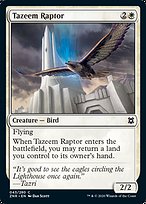




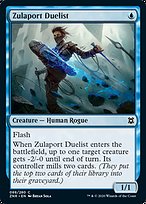



































Zendikar Rising is a large set with 101 commons, 80 uncommons (20 of which are double-faced), 64 rares (11 of which are double-faced), 20 mythic rares (5 of which are double-faced), and three variations of each standard basic land. This is the normal size for a large set of this era except the double-faced rares and mythics are in addition to the normal count (but the uncommons are not). Foil cards are included in booster packs with advertised rate of 33% of boosters. The set was printed in English in the USA, Belgium, and Japan.
Zendikar Rising was sold in 15 card booster packs (which contain an additional ad card or double-faced card placeholder). Booster boxes have 36 packs.
The US printing uses sequential collation with C1/C2 common collation. This is a novel variation of C1/C2 collation that doesn't match any other printing from any set. Every pack contains exactly one non-foil double-faced card, appearing in a normal slot according to its rarity.
Packs are front-facing and have common-uncommon-rare ordering followed by a basic land and an ad card. There are 10 commons, 3 uncommons, and 1 rare. If there is a foil, it will displace a common and appear after the rare.
| 10 Commons | 3 Uncommons | 1 Rare | 1 Land | 1 Ad Card | |
| 9 Commons | 3 Uncommons | 1 Rare | 1 Foil | 1 Land | 1 Ad Card |
Packs are evenly split between C1 commons and C2 commons. Non-foil C1 packs have 2-3 A commons followed by 2 B commons and 5-6 C commons. Non-foil C2 packs have 3-4 A commons followed by 2-3 B commons and 3-4 C commons. (I haven't observed 3A + 2B.) Cards that have showcase variants appear in B or C2 and the showcase variant replaces one of the three copies of the card on the sheet.
When a foil appears in a pack, it will displace a common card. The vast majority of foils appear in C2 packs. The only foils I've observed in C1 packs are a showcase common and a borderless pathway (although a showcase uncommon appeared in a C2 pack). Both of these packs were 3A+1B. C2 foil packs can be 4A+2B, 3A+3B, or 3A+2B. I haven't found any deeper connection between foil type and pack type.
If there is a double-faced uncommon card, it will be the third uncommon.
The A common run consists of 33 different cards each appearing twice. These cards are white, blue, and red (appearing in that order). The choice of first card is mostly arbitrary.
 |  |  |  |  |  |  |  |  |  |  |
 |  |  |  |  |  |  |  |  |  |  |
 |  |  |  |  |  |  |  |  |  |  |
 |  |  |  |  |  |  |  |  |  |  |
 |  |  |  |  |  |  |  |  |  |  |
 |  |  |  |  |  |  |  |  |  |  |
The B common run consists of 22 different cards each appearing three times. The cards alternate between black and green. For cards with showcase versions, one of the three copies is the showcase version. The choice of first card is mostly arbitrary.
 |  |  |  |  |  |  |  |  |  |  |
 |  |  |  |  |  |  |  |  | 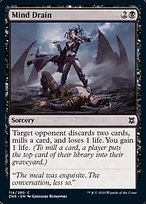 |  |
 | 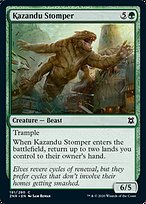 |  |  |  |  |  |  |  |  |  |
 |  |  |  |  |  |  |  |  |  |  |
 | 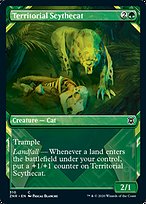 |  |  |  |  |  |  |  |  |  |
 |  |  |  |  |  |  |  |  |  |  |
The C1 common run consists of 27 different cards each appearing twice plus Utility Knife, the short-printed common. It includes cards of all colors and colorless cards. The choice of first card is mostly arbitrary.
 |  | 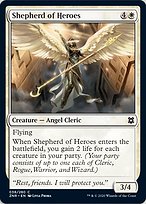 |  |  |  |  |  |  |  |  |
 |  |  |  |  |  |  |  | 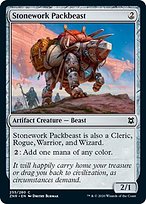 |  |  |
 |  |  |  |  |  | 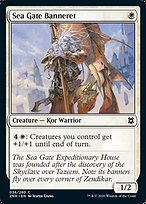 |  |  |  |  |
 |  |  |  |  |  |  |  |  |  |  |
 |  |  |  |  |  |  |  |  |  |  |
The C2 common run consists of 18 different cards each appearing three times plus Utility Knife, the short-printed common. It includes cards of all colors and colorless cards. For cards with showcase versions, one of the three copies is the showcase version. The choice of first card is mostly arbitrary.
 |  | 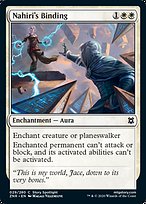 | 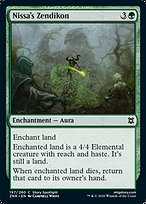 |  |  |  |  |  |  |  |
 |  | 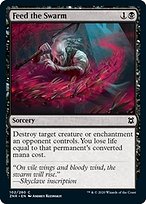 |  | 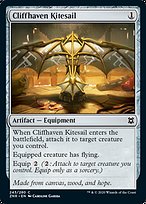 |  | 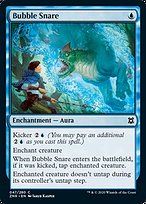 |  |  |  |  |
 |  |  |  |  |  |  |  |  |  |  |
 |  |  |  |  |  |  |  |  |  | 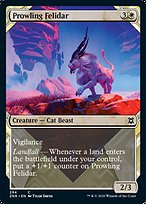 |
 |  |  |  |  |  |  |  |  |  |  |
The Belgian printing uses sequential collation with simple two-run 101 common collation. Every pack contains exactly one non-foil double-faced card, appearing in a normal slot according to its rarity.
Packs are front-facing and have common-uncommon-rare ordering followed by a basic land and an ad or placeholder card. There are 10 commons, 3 uncommons, and 1 rare. If there is a foil, it will displace a common and appear after the rare.
| 10 Commons | 3 Uncommons | 1 Rare | 1 Land | 1 Ad Card | |
| 9 Commons | 3 Uncommons | 1 Rare | 1 Foil | 1 Land | 1 Ad Card |
Each pack contains six cards from the A common run followed by four cards from the B run. Foils can displace a card from either run.
If there is a double-faced uncommon card, it will be the third uncommon.
The A common run consists of 60 different cards each appearing twice plus Utility Knife, the short-printed common. The choice of first card is mostly arbitrary.
 |  |  |  |  |  |  |  |  |  |  |
 |  |  |  |  |  |  |  |  |  |  |
 |  |  |  |  |  |  |  |  |  |  |
 |  |  |  |  |  |  |  |  |  |  |
 |  |  |  |  |  |  |  |  |  |  |
 |  |  |  |  |  |  |  |  |  |  |
 |  |  |  |  |  |  |  |  |  |  |
 |  |  |  |  |  |  |  |  |  |  |
 |  |  |  |  |  |  |  |  |  |  |
 |  |  |  |  |  |  |  |  |  |  |
 |  |  |  |  |  |  |  |  |  |  |
The B common run consists of 40 different cards each appearing three times plus Utility Knife, the short-printed common. For cards that have a showcase variant, one of the three copies is the showcase version. The choice of first card is mostly arbitrary.
 |  |  |  |  |  |  |  |  |  |  |
 |  |  |  |  |  |  |  |  |  |  |
 |  |  |  |  |  |  |  |  |  |  |
 |  |  |  |  |  |  |  |  |  |  |
 |  |  |  |  |  |  |  |  |  |  |
 |  |  |  |  |  |  |  |  |  |  |
 |  |  |  |  |  |  |  |  |  |  |
 |  |  |  |  |  |  |  |  |  |  |
 |  |  |  |  |  |  |  |  |  |  |
 |  |  |  |  |  |  |  |  |  |  |
 |  |  |  |  |  |  |  |  |  |  |
The Japanese printing uses sequential collation with 112 card sheets (which is the usual for Japan). Probably the sheets are 14 × 8. Every pack contains exactly one non-foil double-faced card, appearing in a normal slot according to its rarity.
Packs are front-facing starting with the ad or placeholder card and a full-art basic land, then the rare, 3 uncommons, and 10 commons. If there is a foil, it will appear between the basic land and the rare, displacing a common.
| 1 Ad or Placeholder Card | 1 Land | 1 Rare | 3 Uncommons | 10 Commons | |
| 1 Ad or Placeholder Card | 1 Land | 1 Foil | 1 Rare | 3 Uncommons | 9 Commons |
There are 3 common runs: A, B, and C. A contains 27 distinct cards, and B and C each contain 37 distinct cards. Each pack gets 2 to 3 cards from A followed by 3 to 4 cards from B and 3 to 4 cards from C. This means packs are either 2-4-4, 3-3-4, or 3-4-3. The exact ratios may depend on the way foil collation works. The cards with showcase versions appear in run C where the showcase version takes up one of the card's three slots in the run.
| A | A | B | B | B | B | C | C | C | C |
| A | A | A | B | B | B | C | C | C | C |
| A | A | A | B | B | B | B | C | C | C |
Foils displace a common. As far as I've seen, there will still be at least 2 A commons, 3 B commons, and 3 C commons, and I have seen all three possibilities for common distribution given a foil.
The 20 uncommon double-faced cards form the A uncommon run. This run has each card appearing five times. The remaining 60 cards form the B uncommon run with each card appearing three times. Each pack will either have one A card followed by two B cards, or else three B cards. The rare will be a double-faced card if and only if there is no A uncommon (so there is exactly one non-foil double-faced card in each pack).
To make all the uncommons equally rare, A uncommons would have to appear in 3/4 of packs. However, this seems not to be the case. The rare slot has been advertised as having a mythic rare 1/7.4 of the time (a change from previous sets). If we combine this information with the assumption that double-faced and non-double-faced rares and mythics separately follow the 2 : 1 rule (where an individual rare is twice as likely to appear as an individual mythic), we can calculate the overall double-faced rare rate as 27/148 (about 2/11). This is a close match for the empirical data. (This means double-faced uncommons are too common.) 27/148 is independently the value that is calculated by ignoring 1/7.4 and assuming the 2 : 1 rule and that individual double-faced and non-double faced rares are equally rare.
The non-double-faced rares are printed in two different runs. The more common run has 40 different (non-mythic) rare cards including all the rare cards with showcase versions. A third of the copies of the card are the showcase version. The other run has the remaining cards. The borderless planeswalkers and showcase mythics appear to account for a third of the copies of those cards. The rares that appear on this sheet are the colorless and multi-colored cards except for Phylath, World Sculptor. The rare double-faced cards probably also have a third of the copies made up of variant versions (where applicable), although empirically, the rate I observed for borderless pathways was a bit low.
Placeholder cards appear half of the time and ad cards appear otherwise. These are on different sheets.
The A common run consists of 27 different cards each appearing four times (which would leave 4 fillers on a 112 card sheet). The cards are mostly black. The choice of first card is mostly arbitrary.
 |  |  |  |  |  |  |  |
 |  |  |  |  |  |  |  |
 |  |  |  |  |  |  |  |
 |  |  |  |  |  |  |  |
 |  |  |  |  |  |  |  |
 |  |  |  |  |  |  |  |
 |  |  |  |  |  |  |  |
 |  |  |  |  |  |  |  |
 |  |  |  |  |  |  |  |
 |  |  |  |  |  |  |  |
 |  |  |  |  |  |  |  |
 |  |  |  |  |  |  |  |
 |  |  |  |  |  |  |  |
 |  |  |  |
The B common run consists of 37 different cards each appearing three times (which would leave 1 filler on a 112 card sheet). The cards are mostly white and green. The choice of first card is mostly arbitrary.
 |  |  |  |  |  |  |  |
 |  |  |  |  |  |  |  |
 |  |  |  |  |  |  |  |
 |  |  |  |  |  |  |  |
 |  |  |  |  |  |  |  |
 |  |  |  |  |  |  |  |
 |  |  |  |  |  |  |  |
 |  |  |  |  |  |  |  |
 |  |  |  |  |  |  |  |
 |  |  |  |  |  |  |  |
 |  |  |  |  |  |  |  |
 |  |  |  |  |  |  |  |
 |  |  |  |  |  |  |  |
 |  |  |  |  |  |  |
The C common run consists of 37 different cards each appearing three times (which would leave 1 filler on a 112 card sheet). The cards are mostly red and blue. For cards that have showcase variants, one of the copies on the sheet is the showcase variant. The choice of first card is mostly arbitrary.
 |  |  |  |  |  |  |  |
 |  |  |  |  |  |  |  |
 |  |  |  |  |  |  |  |
 |  |  |  |  |  |  |  |
 |  |  |  |  |  |  |  |
 |  |  |  |  |  |  |  |
 |  |  |  |  |  |  |  |
 |  |  |  |  |  |  |  |
 |  |  |  |  |  |  |  |
 |  |  |  |  |  |  |  |
 |  |  |  |  |  |  |  |
 |  |  |  |  |  |  |  |
 |  |  |  |  |  |  |  |
 |  |  |  |  |  |  |
The A uncommon run consists of the 20 double-faced uncommons each appearing five times. The choice of first card is mostly arbitrary.
 |  |  |  |  |  | 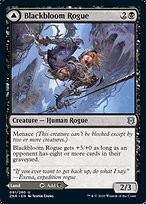 |  |
 |  | 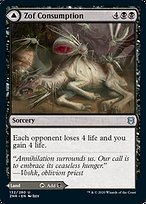 |  | 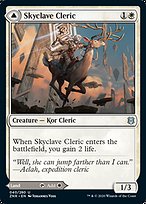 |  |  |  |
 |  |  |  |  |  |  |  |
 |  |  |  |  |  |  |  |
 |  |  |  |  |  |  |  |
 |  |  |  |  |  |  |  |
 |  |  |  |  |  |  |  |
 |  |  |  |  |  |  |  |
 |  |  |  |  |  |  |  |
 |  |  |  |  |  |  |  |
 |  |  |  |  |  |  |  |
 |  |  |  |  |  |  |  |
 |  |  |  |
The B uncommon run consists of the 60 non-double-faced uncommons each appearing three times. For cards that have a showcase variants, one of the three copies is the showcase variant. The choice of first card is mostly arbitrary.
 |  |  |  |  |  | 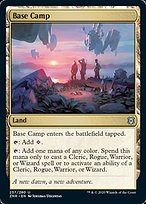 |  |
 | 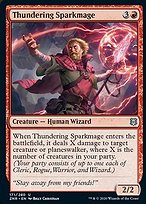 |  |  |  |  |  | 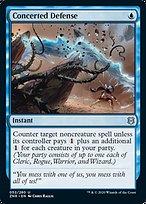 |
 |  | 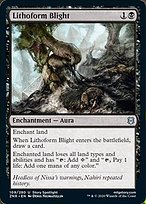 |  |  |  |  |  |
 |  |  |  |  |  |  |  |
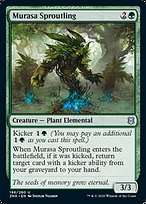 |  |  |  |  |  |  |  |
 |  |  |  | 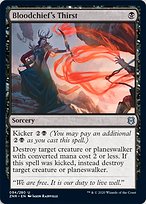 |  |  |  |
 |  | 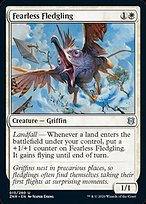 |  |  |  |  |  |
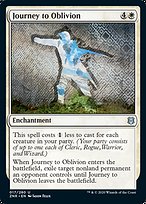 |  |  |  |  |  |  |  |
 |  |  |  |  |  |  |  |
 |  |  |  |  |  |  |  |
 |  |  |  |  |  |  |  |
 |  |  |  |  |  |  |  |
 |  |  |  |  |  |  |  |
 |  |  |  |  |  |  |  |
 |  |  |  |  |  |  |  |
 |  |  |  |  |  |  |  |
 |  |  |  |  |  |  |  |
 |  |  |  |  |  |  |  |
 |  |  |  |  |  |  |  |
 |  |  |  |  |  |  |  |
 |  |  |  |  |  |  |  |
 |  |  |  |  |  |  |  |
 |  |  |  |
The land run contains each variation of each basic land seven times. The choice of first card is mostly arbitrary.
 | 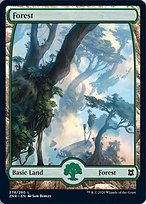 |  |  |  | 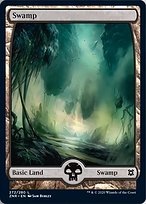 |  |  |
 |  |  |  |  | 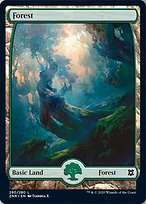 |  |  |
 |  |  |  |  |  |  |  |
 |  |  |  |  |  |  |  |
 |  |  |  |  |  |  |  |
 |  |  |  |  |  |  |  |
 |  |  |  |  |  |  |  |
 |  |  |  |  |  |  |  |
 |  |  |  |  |  |  |  |
 |  |  |  |  |  |  |  |
 |  |  |  |  |  |  |  |
 |  |  |  |  |  |  |  |
 |  |  |  |  |  |  |  |
 |
Most of the marketing cards in Zendikar Rising have a token on the front face. In addition, there is a card that has an advertisement for MTG Arena on the front face. (I've seen some backs with a PEGI rating, and some with ESRB, so there may be a region difference.) (Although the ad rate looks high, this slot is replaced by a placeholder half the time, so the overall ad rate is similar to other recent sets.) They are printed in a 112 card run with items appearing different numbers of times.
 |  |  |  |  |  |  | 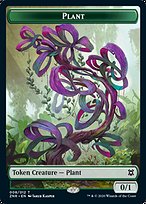 |
 |  |  |  |  |  |  |  |
 |  |  |  |  |  |  |  |
 |  |  |  |  |  |  |  |
 |  |  |  |  |  |  |  |
 |  |  |  |  |  |  |  |
 |  |  |  |  |  |  |  |
 |  |  |  |  |  |  |  |
 |  |  |  |  |  |  |  |
 |  |  |  |  |  |  |  |
 |  |  |  |  |  |  |  |
 |  |  |  |  |  |  |  |
 |  |  |  |  |  |  |  |
 |  |  |  |  |  |  |  |
| Token Rarity | ||
|---|---|---|
 Hydra × 2 Hydra × 2 |  Angel Warrior × 4 Angel Warrior × 4 |  Cat Beast × 4 Cat Beast × 4 |
 Goblin Construct × 4 Goblin Construct × 4 |  Illusion × 4 Illusion × 4 |  Construct × 5 Construct × 5 |
 Kor Warrior × 6 Kor Warrior × 6 |  Cat × 8 Cat × 8 | 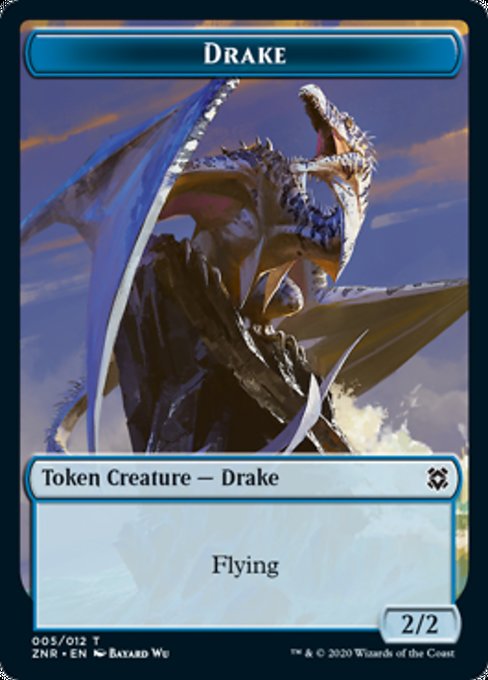 Drake × 8 Drake × 8 |
 Plant × 8 Plant × 8 |  Copy × 10 Copy × 10 |  Insect × 12 Insect × 12 |
 Arena Ad Card × 37 Arena Ad Card × 37 | ||
Set boosters packs (as far as I've seen) are printed in the US. They use sequential collation.
Packs are front-facing. In order, there is an art card, a basic land, 0-5 commons, 1-6 uncommons, a "head-turner" card, 2 "wildcards," a rare, a foil, and an ad. Mark Rosewater's "Set Booster" article gives pretty detailed information about the contents. [1]
According to the article, the art card is signed 5% of the time. Apparently the signed cards are on a different sheet.
According to the article, the basic land slot is foil 15% of the time. The foil lands are on a different sheet. This is the only place where these basic lands can appear, foil or otherwise. (The List also has basic lands.)
The commons and uncommons together are always 6 cards. The article gives the breakdown as follows, starting with 5 commons and going down to 0: 35%, 40%, 12.5%, 7%, 3.5%, 2%. The commons are chosen from a single 101 card run containing each common once, and the uncommons are chosen from a separate 60 card run containing each non-double-faced uncommon once (perhaps repeated twice to fill a sheet). Showcase cards do not appear in these slots.
The head-turner slot contains a common or uncommon showcase card, or an uncommon double-faced card. The rate of double-faced cards is probably 5/8. The double-faced cards are on one sheet, and the showcase cards are on one other sheet. That sheet has each common appearing two times for every one appearance of an uncommon. On the double-faced sheet, there seems to be a mistake where Kabira Takedown // Kabira Plateau appears too often in place of some of the copies of Makindi Stampede // Makindi Mesas.
The wildcard slot can contain cards of any rarity. It cannot contain those cards that appear in the head-turner slot nor basic lands, but other cards are fair game (including rare double-faced and/or showcase cards). The article gives detailed information about the joint distribution of the wildcard slot: two commons 49%, common and uncommon 24.5%, common and rare 17.5%, two uncommons 3.1%, uncommon and rare 4.3%, two rares 1.6%. Commons and uncommons each have one hopper. When two commons or two uncommons appear, they are consecutive cards from the same run. There are probably four hoppers contributing to rares. Double-faced rares have their own hopper. Probably this includes borderless and showcase versions of these cards. The showcase (and probably borderless) versions of other rares have their own hopper. The remaining two hoppers contain normal versions of rare cards. This appears to be a configuration where the more common hoppper uses a sheet with 2 copies of each rare and one copy of each mythic, and the less common hopper has the same but cards with special versions are omitted; this is a configuration that is used so that cards with special versions are not more common overall. When two rares appear, it seems that it is always a card from the primary normal rare hopper and a double-faced rare. Cards from the primary rare hopper and the double-faced rare hopper can appear with commons or uncommons. Cards from the other two rare hoppers can maybe only appear with commons. The order of the cards is common, uncommon, non-double-faced rare, double-faced rare.
According to the article, the rare slot's mythic rate is 1/7.4, the same as the rate for draft boosters. As noted in the discussion of draft boosters, this is the rate that arises from assumption that double-faced and non-double-faced rares and mythics separately follow the 2 : 1 rule (where an individual rare is twice as likely to appear as an individual mythic) and that double-faced and non-double-faced cards of the same rarity are equally rare. (Showcase and borderless variants can appear in this slot as well.) Like the wildcard slots, there is a rare run with all the normal copies of the cards, a rare run without copies of cards that have variants, and a run with the variants arranged so that variants do not affect the total rarity of cards and account for about a third of the total copies for a card. The double-faced cards are separate from this scheme (but may work the same way).
The foil slot can contain a card of any rarity including showcase, bordlerless, and double-faced cards. Basic lands do not appear in this slot, however, as foil basic lands appear in the basic land slot instead. Showcase commons are apparently printed on the same sheet as normal commons with each variant appearing once (so cards with showcase variants should be more common overall). The same is true for showcase uncommons. Foil double-faced uncommons seem to be individually about as rare as normal uncommons with maybe a small bias twoard normal uncommons. The same is true for rares versus double-faced rares. My overall pull rates were about 75% common and about 13-14% uncommon.
As given by the article, 1/4 of the time the token is replaced by a card from The List. There are three list sheets. One sheet contains mostly commons and uncommons (which I will call the uncommons sheet), and the other two contain mostly rares. One rare sheet has the cards with the holofoil rare stamp and the other has the cards that don't. (These cards are so rare, I haven't been able to confirm each individual card.) When there is a list card, about 3/4 of the time it is from the uncommon sheet. The other sheets seem to appear more or less in proportion to the number of cards on the sheet (so there should be no significant difference in rarity between the sheets).
The common run consists of each common appearing once. The choice of first card is mostly arbitrary.
 |  |  |  |  |  |  |  |  |  |  |
 |  |  |  |  |  |  |  |  |  |  |
 |  |  |  |  |  |  |  |  |  |  |
 |  |  |  |  |  |  |  |  |  |  |
 |  |  |  |  |  |  |  |  |  |  |
 |  |  |  |  |  |  |  |  |  |  |
 |  |  |  |  |  |  |  |  |  |  |
 |  |  |  |  |  |  |  |  |  |  |
 |  |  |  |  |  |  |  |  |  |  |
 |  |
The common run consists of each non-double-faced uncommon appearing once. The choice of first card is mostly arbitrary. (Possibly this is repeated twice to fill a sheet.)
 |  |  |  |  |  |  |  |  |  |  |
 |  |  |  |  |  |  |  |  |  |  |
 |  |  |  |  |  |  |  |  |  |  |
 |  |  |  |  |  |  |  |  |  |  |
 |  |  |  |  |  |  |  |  |  |  |
 |  |  |  |  |
The head-turner slot's double-faced run contains each uncommon double-faced card twice, except Kabira Takedown // Kabira Plateau appears an extra time in place of Makindi Stampede // Makindi Mesas. (It is perhaps repeated three times to nearly fill a sheet.) The choice of first card is mostly arbitrary.
 |  |  |  |  |  |  |  |  |  |  |
 |  |  |  |  |  |  |  |  |  |  |
 |  |  |  |  |  |  |  |  |  |  |
 |  |  |  |  |  |  |
The head-turner slot's showcase run contains each showcase common card ten times and each showcase uncommon card five times. This listing is a little bit speculative because the repetition in the run makes it hard to analyze. The choice of first card is mostly arbitrary.
 |  |  |  |  |  |  |  |  |  |  |
 |  |  |  |  |  |  |  |  |  |  |
 |  |  |  |  |  |  |  |  |  |  |
 |  |  |  |  |  |  |  |  |  |  |
 |  |  |  |  |  |  |  |  |  |  |
 |  |  |  |  |  |  |  |  |  |  |
 |  |  |  |  |  |  |  |  |  |  |
 |  |  |  |  |  |  |  |  |  |  |
 |  |  |  |  |  |  |  |  |  |  |
 |  |  |  |  |  |  |  |  |  |  |
 |  |  |  |  |  |  |  |  |  |
The common wildcard run consists of each common appearing once. The choice of first card is mostly arbitrary.
 |  |  |  |  |  |  |  |  |  |  |
 |  |  |  |  |  |  |  |  |  |  |
 |  |  |  |  |  |  |  |  |  |  |
 |  |  |  |  |  |  |  |  |  |  |
 |  |  |  |  |  |  |  |  |  |  |
 |  |  |  |  |  |  |  |  |  |  |
 |  |  |  |  |  |  |  |  |  |  |
 |  |  |  |  |  |  |  |  |  |  |
 |  |  |  |  |  |  |  |  |  |  |
 |  |
The uncommon wildcard run consist of each non-double-faced uncommon appearing twice. The choice of first card is mostly arbitrary.
 |  |  |  |  |  |  |  |  |  |  |
 |  |  |  |  |  |  |  |  |  |  |
 |  |  |  |  |  |  |  |  |  |  |
 |  |  |  |  |  |  |  |  |  |  |
 |  |  |  |  |  |  |  |  |  |  |
 |  |  |  |  |  |  |  |  |  |  |
 |  |  |  |  |  |  |  |  |  |  |
 |  |  |  |  |  |  |  |  |  |  |
 |  |  |  |  |  |  |  |  |  |  |
 |  |  |  |  |  |  |  |  |  |  |
 |  |  |  |  |  |  |  |  |  |
The art series run consist of each art card appearing once. The choice of first card is mostly arbitrary. (Note that the images depict signature art cards, but this information is for normal art cards.)
 |  |  |  | 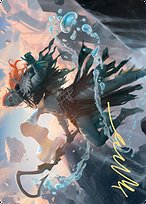 |  |  |  |  |
 |  |  |  |  |  |  |  | 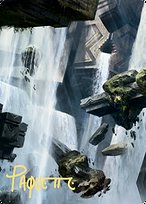 |
 | 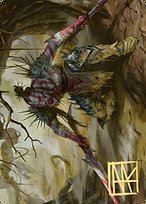 |  | 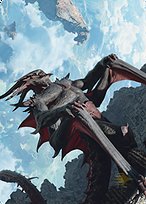 |  |  |  |  |  |
 |  |  | 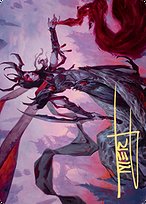 | 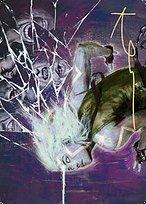 |  |  |  |  |
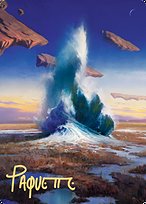 |  |  |  |  |  |  |  | 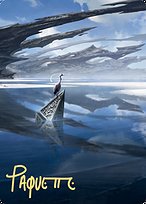 |
 |  |  |  |  |  |  |  |  |
 |  |  |  |  |  |  |  |  |
 | 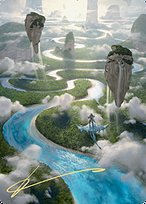 |  |  |  |  | 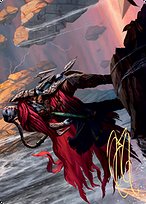 |  |  |
 |  |  |  |  |  |  |  |  |
There are some boxes where tokens are facing the back of the pack and some where it faces the front. There are enough of each that it's unclear which is intended. I will present the run with tokens on front. Naturally, when tokens face the back, the order is reversed.
The cards are similar to the cards in draft boxes, but there are additional minigame cards. Most minigame cards use both faces to explain the minigame, but one only needs one face. The fronts of minigame cards are on the backs for both kinds of cards. The one-sided minigame can appear on the back of a token. There are also cards with arena ads on the front. Unlike draft boxes, arena ad backs are not correlated with fronts (though the ad backs still exist elsewhere on the sheet). The sides of the ads are also reversed relative to the tokens.
 |  |  |  |  |  |  |  |  |  |  |
 |  |  |  |  |  |  |  |  |  |  |
 |  |  |  |  |  |  |  |  |  |  |
 |  |  |  |  |  |  |  |  |  |  |
 |  |  |  |  |  |  |  |  |  |  |
 |  |  |  |  |  |  |  |  |  |  |
 |  |  |  |  |  |  |  |  |  |  |
 |  |  |  |  |  |  |  |  |  |  |
 |  |  |  |  |  |  |  |  |  |  |
 |  |  |  |  |  |  |  |  |  |  |
 |  |  |  |  |  |  |  |  |  |  |
| Token Rarity | ||
|---|---|---|
 Hydra × 2 Hydra × 2 |  Angel Warrior × 4 Angel Warrior × 4 |  Goblin Construct × 4 Goblin Construct × 4 |
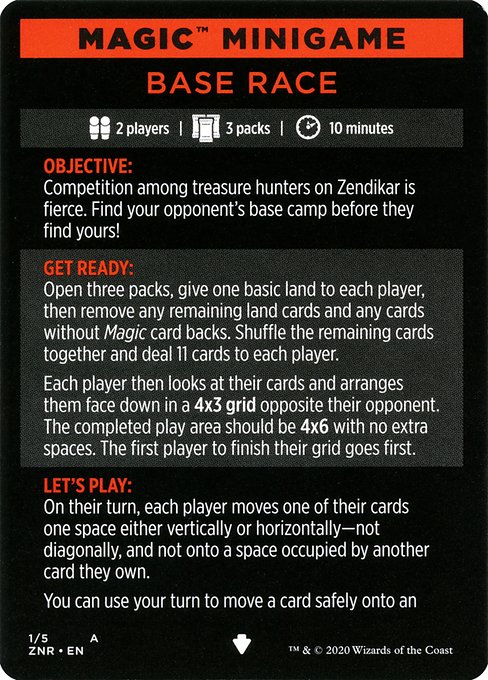 Base Race × 5 Base Race × 5 |  Booster Sleuth × 5 Booster Sleuth × 5 |  Cat Beast × 5 Cat Beast × 5 |
 Illusion × 5 Illusion × 5 |  Roil Royale × 5 Roil Royale × 5 |  Strictly Better × 5 Strictly Better × 5 |
 Construct × 7 Construct × 7 |  Kor Warrior × 7 Kor Warrior × 7 |  Cat × 10 Cat × 10 |
 Drake × 10 Drake × 10 |  Plant × 10 Plant × 10 |  Copy × 11 Copy × 11 |
 Arena Ad Card × 12 Arena Ad Card × 12 |  Insect × 14 Insect × 14 | |
| Tokens (With Reverse Side) |
|---|
|
The foil common run contains each common card once plus each showcase common card once. The choice of first card is mostly arbitrary.
 |  |  |  |  |  |  |  |  |  |  |
 |  |  |  |  |  |  |  |  |  |  |
 |  |  |  |  |  |  |  |  |  |  |
 |  |  |  |  |  |  |  |  |  |  |
 |  |  |  |  |  |  |  |  |  |  |
 |  |  |  |  |  |  |  |  |  |  |
 |  |  |  |  |  |  |  |  |  |  |
 |  |  |  |  |  |  |  |  |  |  |
 |  |  |  |  |  |  |  |  |  |  |
 |  |  |  |  |  |  |  |  |  |  |
[1] Mark Rosewater's article introducing set boosters is here.